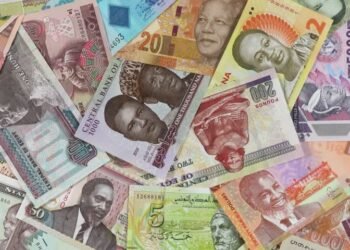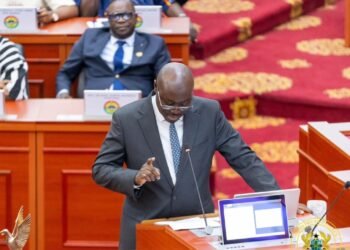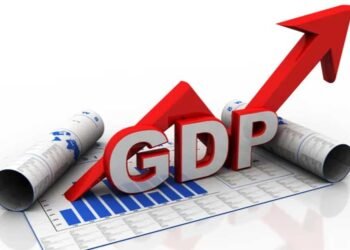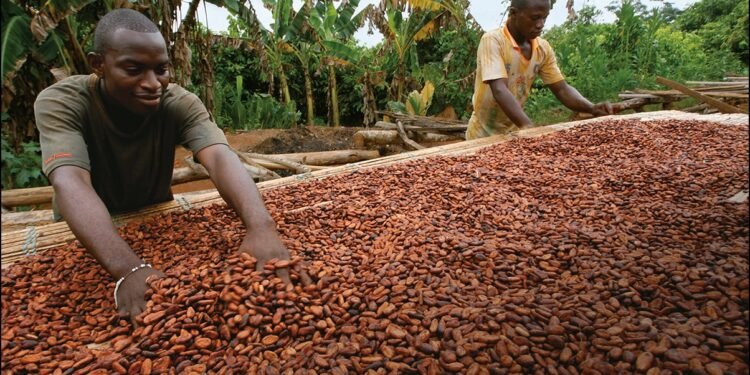Ghana’s total public debt stock rose to GH¢769.4 billion at the end of March 2025, an increase of GH¢42.7 billion in the first quarter alone.
This is according to the Bank of Ghana’s May 2025 Summary of Financial and Economic Data. Despite the rise in the nominal value of the debt, Ghana’s debt-to-GDP ratio has declined to 55%, indicating some fiscal relief resulting from the expansion in the size of the economy.
The country’s public debt stood at GH¢752.1 billion in January 2025 and GH¢768.1 billion in February 2025, before reaching GH¢769.4 billion by the end of March. This marks a steady climb in the debt profile over the first quarter. In dollar terms, the debt stock was estimated at US$49.5 billion in March 2025, marginally higher than the figure recorded in December 2024.
The steady rise in Ghana’s debt is partly attributed to currency depreciation and increased domestic borrowing. However, the pace of the increase appears moderate compared to previous years when external shocks significantly impacted debt accumulation.
Debt-to-GDP Ratio Declines Due to Economic Expansion
Although the public debt increased in absolute terms, its proportion to the Gross Domestic Product (GDP) fell to 55%. This is due to the growth in Ghana’s economy, which was valued at GH¢1.4 trillion in March 2025. The expansion of the economy helped dilute the debt burden, at least on paper, offering a temporary breather to policymakers who are under pressure to stabilize the country’s fiscal framework.
The debt-to-GDP ratio is a crucial metric used to assess a country’s ability to service its debt. A lower ratio generally signals improved fiscal space, assuming other economic indicators such as inflation, employment, and investment remain stable. Ghana’s declining ratio offers a positive signal, even amid concerns about debt sustainability.
External and Domestic Debt Composition
Ghana’s external debt stood at US$28.5 billion in March 2025, a slight increase from US$28.3 billion recorded in December 2024. This represents 28.5% of GDP, maintaining a nearly stable share. The external debt levels were influenced by the depreciation of the Ghana cedi, which raised the local currency value of the foreign debt component.
Meanwhile, domestic debt rose from GH¢309.5 billion at the end of December 2024 to GH¢326.9 billion in March 2025. This domestic component now accounts for about 23.4% of GDP. Domestic borrowing continues to be a vital source of financing for the government, especially as access to international capital markets remains constrained due to credit rating downgrades and high interest rates globally.
Government Fiscal Operations Show Restraint
The fiscal deficit-to-GDP ratio stood at 1.0% in March 2025, highlighting a relatively conservative fiscal stance by the government during the period under review. The report also noted that government spending remained low, reflecting efforts to rein in expenditure in the face of tight revenue conditions.
Encouragingly, Ghana recorded a primary surplus of 0.3% of GDP. The primary balance, which excludes interest payments on existing debt, serves as an indicator of a country’s ability to reduce its debt levels over time. A surplus in this area demonstrates that the government is generating enough revenue to meet its non-interest obligations and potentially reduce debt stock over the medium term.
While the decline in the debt-to-GDP ratio may offer some optimism, analysts caution against complacency. The absolute level of debt remains high, and debt servicing costs continue to consume a significant portion of government revenue. Moreover, the risks associated with currency volatility and inflation could further strain public finances.
Going forward, Ghana must sustain economic growth while implementing robust debt management strategies. These include improving domestic revenue mobilization, rationalizing public expenditures, and exploring innovative financing mechanisms that do not jeopardize long-term fiscal sustainability.
READ ALSO: President Mahama Charged to Commute Inmates on Death Row























